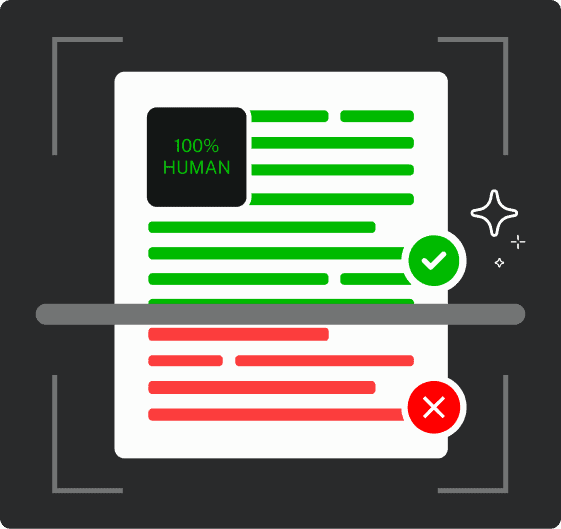Ah, the humble exclamation mark. That little vertical line topped with a dot can transform a whisper into an echoing shout.
As with any punctuation, a single keystroke can easily change the meaning of what you just wrote.
The essence of writing is all about capturing and delivering emotions through words, and no other sentence type captures this better than exclamatory sentences.
They’re like your written permission to crank up the volume when you have to.
In this guide, we’ll explore everything you need to know about exclamatory sentences.
From their emotional foundations to practical examples across different contexts, you’ll learn how to wield exclamation marks with confidence and purpose.
What Is an Exclamatory Sentence?
An exclamatory sentence is a type of sentence that expresses strong emotion, surprise, excitement, or emphasis.
Unlike their more reserved cousins (declarative, interrogative, and imperative), exclamatory sentences pack an emotional punch.
They’re the written equivalent of raising your voice, jumping up and down, or gasping in surprise.


Never Worry About AI Detecting Your Texts Again. Undetectable AI Can Help You:
- Make your AI assisted writing appear human-like.
- Bypass all major AI detection tools with just one click.
- Use AI safely and confidently in school and work.
The most obvious marker of an exclamatory sentence is the exclamation mark (!) at the end. But there’s more to these sentences than just their punctuation.
The structure, word choice, and context all play crucial roles in creating effective exclamations.
Here are some simple examples:
- What a beautiful day!
- I can’t believe we won!
- That was the best concert ever!
- How incredibly thoughtful of you!
- This is amazing!
Notice how each sentence conveys a distinct emotional reaction. That’s the magic of exclamatory sentences—they inject feeling directly into your writing.
How Exclamatory Sentences Express Strong Emotions
Exclamatory sentences are emotional chameleons. They can express virtually any intense feeling—joy, anger, surprise, disgust, fear, or amazement.
The versatility of these sentences makes them powerful tools for writers looking to create emotional resonance with readers.
The emotion in an exclamatory sentence comes from several elements working together:
- Word choice plays a huge role. Strong adjectives and intensifiers (like “incredible,” “absolutely,” or “utterly”) amplify the emotional impact.
- Sentence structure often shifts in exclamations. Many begin with “what” or “how,” followed by the emotional core of the message.
- Context provides the foundation. An exclamation mark in a horror story creates a different emotional effect than one in a romantic comedy.
Let’s look at how the same basic sentence can express different emotions through minor adjustments:
- Joy: What an incredible achievement! (celebrating success)
- Anger: What an absolute disaster! (expressing frustration)
- Surprise: What an unexpected turn of events! (showing astonishment)
- Fear: What a terrifying situation! (communicating alarm)
- Disgust: What a revolting display! (showing repulsion)
In each case, the exclamatory structure amplifies the emotional content, giving readers a clear signal about how they should interpret the text’s emotional tone.
Types of Exclamatory Sentences (With Examples)
Exclamatory sentences come in various flavors, each serving a different purpose in your writing.
Understanding these types will help you choose the right exclamation for any situation.
1. Exclamations of Joy or Happiness
These express positive emotions like excitement, pleasure, or satisfaction.
- We won the championship!
- I got the job!
- This is the happiest day of my life!
- How wonderful to see you after all these years!
- That sunset is absolutely breathtaking!
2. Exclamations of Surprise or Shock
These convey astonishment, disbelief, or unexpected realizations.
- I can’t believe it’s snowing in April!
- You’re moving to Paris?!
- What an unexpected plot twist!
- How strange that we both chose the same outfit!
- Thirty people showed up to the meeting!
3. Exclamations of Anger or Frustration
These express negative emotions like irritation, rage, or disappointment.
- This is the third time the train has been delayed!
- How dare you speak to me that way!
- I’ve had it with your excuses!
- What a disaster this project has become!
- Never do that again!
4. Exclamations of Fear or Alarm
These communicate concern, warning, or fright.
- Look out for that car!
- The building is on fire!
- What a terrifying experience that was!
- How dangerous these conditions have become!
- We’re running out of time!
5. Rhetorical Exclamations
These aren’t expecting a response, but use the exclamatory form for emphasis.
- How time flies!
- What I wouldn’t give for a good night’s sleep!
- The things people do for love!
- How little we know about the ocean!
- What fools we mortals be!
6. Exclamatory Questions
These blend question structures with exclamatory emotion (and often use both punctuation marks).
- Isn’t this view amazing?!
- How could you forget our anniversary?!
- Aren’t you excited about the trip?!
- Didn’t I tell you this would happen?!
- Who would have thought we’d end up here?!
The key to effective exclamatory sentences is using them judiciously. Like a powerful spice, they’re most effective when they’re not overused.
Exclamatory Sentences vs. Other Sentence Types
To fully understand exclamatory sentences, it helps to compare them to the other main sentence types. Each has its own purpose, structure, and punctuation.
Declarative Sentences
- Purpose: To make a statement or provide information
Ends with: Period (.)
Emotion level: Generally neutral
Example: The concert starts at 8:00 PM.
- Exclamatory version: The concert starts at 8:00 PM! (The exclamatory version suggests excitement or urgency about the concert time)
Interrogative Sentences
- Purpose: To ask a question
Ends with: Question mark (?)
Emotion level: Can vary, but structure focuses on inquiry
Example: Did you finish your homework?
- Exclamatory version: Did you actually finish all that homework?! (The exclamatory version expresses surprise or disbelief about the homework completion)
Imperative Sentences
- Purpose: To give a command or direction
Ends with: Period (.) or exclamation mark (!) depending on urgency
Emotion level: Can range from gentle suggestion to forceful command
Example: Please close the door.
- Exclamatory version: Close the door! (The exclamatory version communicates urgency or frustration)
The major difference between exclamatory sentences and other types is the emotional intensity.
Where other sentence types can be delivered with varying degrees of emotion, exclamatory sentences are explicitly designed to convey strong feelings.
This means exclamatory sentences stand out on the page.
The exclamation mark signals to readers that this particular sentence carries special emotional weight or significance.
Compare these passages:
- Without exclamations: John opened the envelope. He couldn’t believe what he saw. It was a check for one million dollars. He never expected to win the contest. His hands were shaking as he called his wife to tell her the news.
- With strategic exclamations: John opened the envelope. He couldn’t believe what he saw. It was a check for one million dollars! He never expected to win the contest. His hands were shaking as he called his wife to tell her the news. “We’re rich!” he shouted.
The selective use of exclamations in the second passage highlights the most emotionally charged moments, guiding the reader’s experience.
How to Form an Exclamatory Sentence Correctly
When creating effective exclamatory sentences, you don’t want to just slap an exclamation mark at the end of any statement.
There’s an art to constructing sentences that truly deserve that punctuation punch.
Using Exclamation Marks (!) in the Right Context
The exclamation mark and other punctuation marks are powerful tools, but with great power comes great responsibility.
Here are some guidelines for using exclamation marks effectively:
1. Save them for genuine emotional moments. Reserve exclamation marks for sentences that truly convey excitement, surprise, or strong feelings. If every sentence ends with an exclamation mark, they lose their impact.
2. Consider your medium and audience. Formal academic writing rarely uses exclamation marks. Business communications use them sparingly. Creative writing and casual digital communication (like texts or social media) allow for more liberal use.
3. Avoid exclamation mark inflation. One exclamation mark is almost always sufficient. Multiple exclamation marks (!!!) can make your writing seem unprofessional or overly emotional.
4. Pair with appropriate content. Make sure the words in your sentence match the emotional tone indicated by the exclamation mark. “I’m going to the store!” doesn’t carry the emotional weight the punctuation suggests.
5. Use for genuine emphasis, not as a default. Ask yourself: Does this sentence actually need an exclamation mark to convey its meaning? If not, a period will usually suffice.
Sentence Structure in Exclamatory Sentences
Exclamatory sentences often have distinct structural patterns that help convey their emotional content:
1. What + Noun Phrase + Subject + Verb
- What a beautiful day it is!
- What an incredible performance they gave!
- What a disaster this meeting has become!
2. How + Adjective/Adverb + Subject + Verb
- How quickly the time passed!
- How beautiful the sunset looks!
- How carelessly he handled the delicate vase!
3. Direct Exclamations
- I can’t believe it!
- This is amazing!
- We won!
4. Interjections + Statements
- Wow! That was close.
- Oh no! I forgot my wallet.
- Hooray! We’re going to Disney World.
5. Exclamatory Questions
- Isn’t this view spectacular?!
- How could they do such a thing?!
- Didn’t I warn you this would happen?!
The structure you choose should match the emotion you’re trying to convey.
Different structures create different emotional tones even when expressing similar sentiments.
How AI Can Improve Sentence Structure & Expression
AI tools enhance writing by refining sentence structure, punctuation, and variety. They help craft impactful exclamatory sentences while ensuring clarity.
Undetectable AI offers tools that suggest enhancements, proper punctuation, and sentence variation to improve overall writing quality.

Undetectable AI’s Ask AI tool is designed to help students refine their writing, making it more expressive and grammatically sound.
It works well alongside an AI Essay Writer, helping to enhance clarity, tone, and overall impact.
It assists with:
- Identifying where exclamatory sentences fit best in essays or creative writing.
- Transforming flat statements into impactful, emotionally resonant expressions.
- Balancing sentence structures by ensuring exclamations aren’t overused.
- Checking punctuation and grammar to maintain clarity.

For broader writing improvements, Undetectable AI’s AI Chat offers instant feedback and guidance on sentence structure, tone, and expression.
Whether for school projects or general inquiries, it ensures your writing is clear, polished, and engaging.
Feel free to also explore our AI Detector and Humanizer in the widget below!
Say It Loud (But Not Too Loud)!
Exclamatory sentences are powerful tools in your writing arsenal. When used effectively, they inject emotion, emphasis, and energy into your words.
They help readers feel the excitement, surprise, anger, or joy that you want to convey. Like all powerful tools, they work best when used with intention and care.
Remember these key takeaways:
- Exclamatory sentences express strong emotions or emphasis
- They work best when used sparingly for genuinely emotional moments
- Different structures (What a…, How…, etc.) create different emotional effects
- Context matters—what’s appropriate in a text message differs from what works in a business email
- AI tools can help you refine your use of exclamatory sentences across different writing situations
The next time you find your finger hovering over that exclamation mark key, ask yourself:
Does this sentence genuinely warrant this punctuation? Is this a moment of true emotion or emphasis? If the answer is yes, then by all means, express yourself!
For even more control over your tone and punctuation, Undetectable AI’s smart tools ensure your exclamatory sentences are impactful, polished, and well-structured.
Try Ask AI and AI Chat today to refine your expression and make every sentence count!
So go forth and exclaim—judiciously, purposefully, and with the confidence that comes from knowing exactly when and how to make your writing shout from the page!
